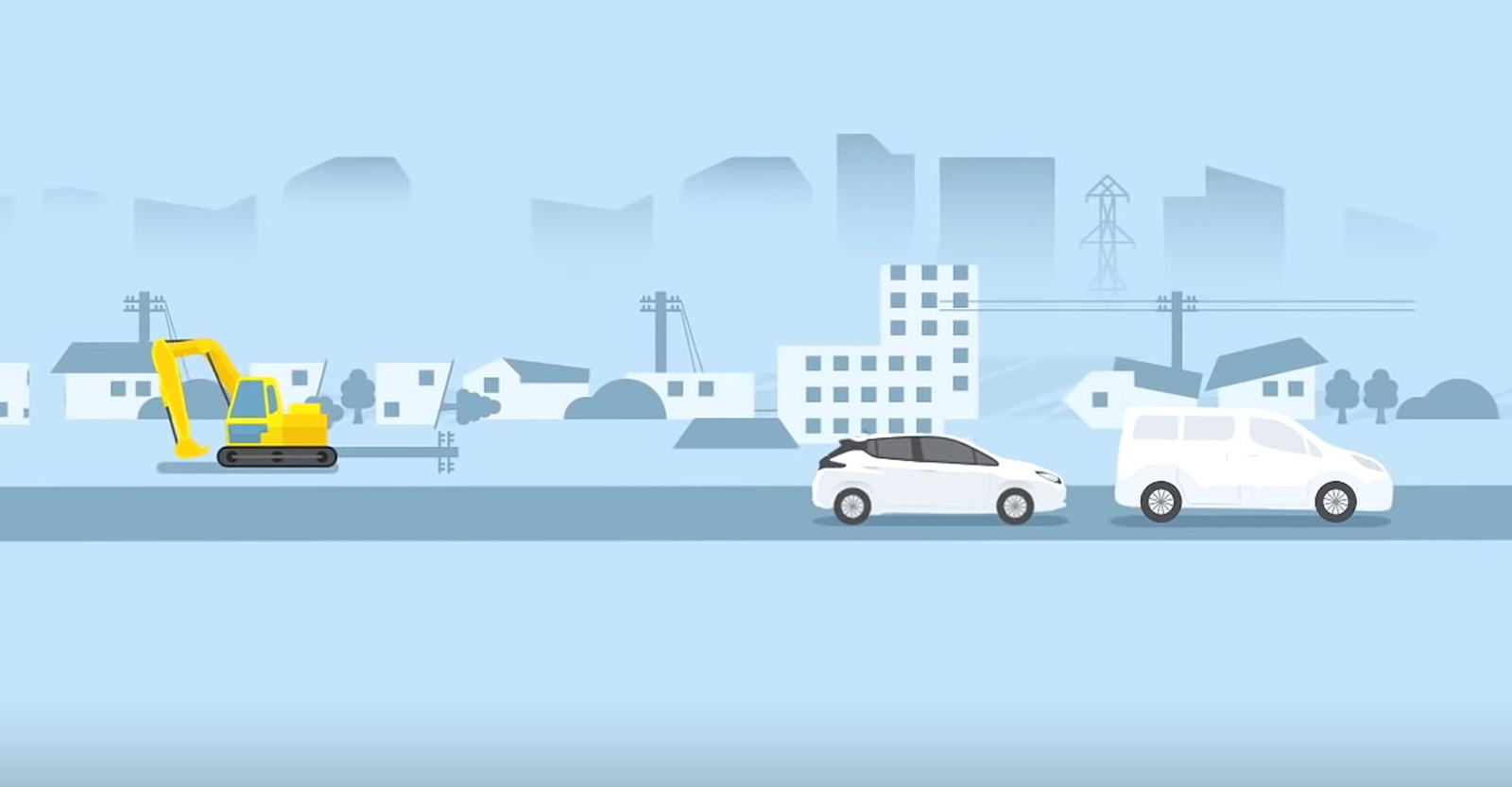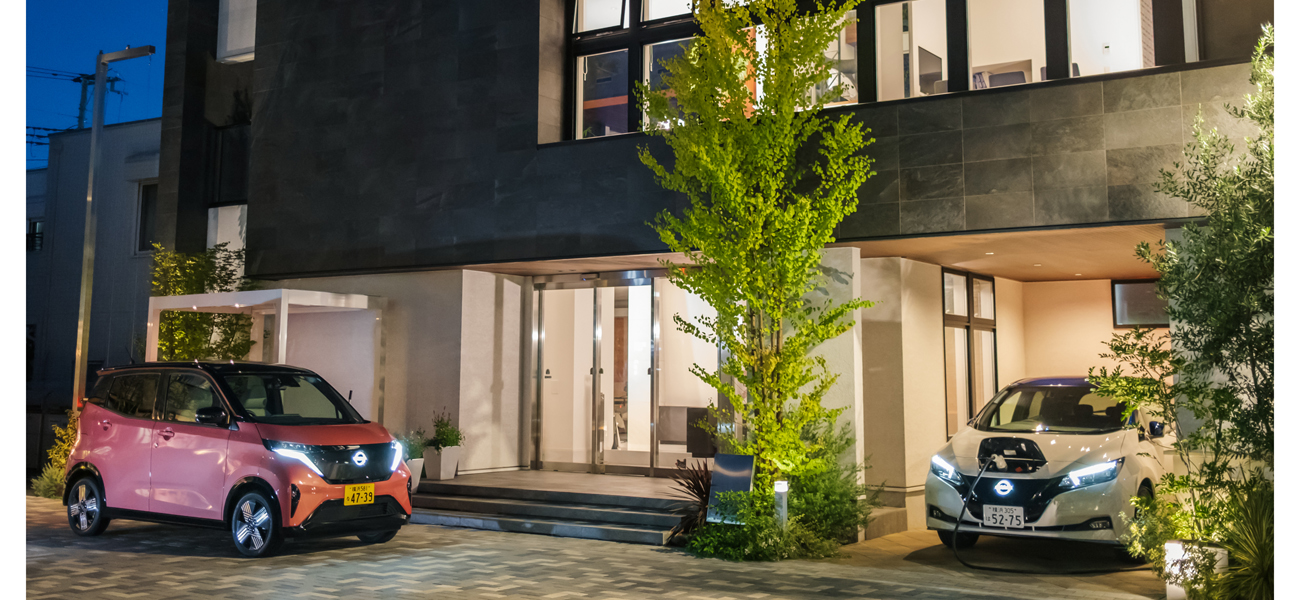
When the Nissan LEAF first went on sale in 2010, one of the main concerns about electric cars was where to charge them. Today, charging stations are much more common, battery capacity has increased and the range of electric vehicles has been greatly extended. Rather than "Where can they go to get power," the question increasingly being asked about EVs is, "Where can they go to provide power?"
A new use for electric cars has surfaced in recent years. In addition to transporting people and goods efficiently and reliably while producing zero emissions, they've also proved uniquely suited to providing relief in times of natural disaster.
In Japan, a country that experiences frequent typhoons in addition to 10% of the world's earthquakes – more than 2,000 last year alone – EVs have proved to be powerful tools for community resilience.
"Less than three months after the first-generation LEAF launched, the northeastern coast of Japan was struck by the March 2011 earthquake and tsunami," said Ryusuke Hayashi, senior manager of EV operations at Nissan. "4.8 million households lost power, and Nissan provided 66 LEAFs to the disaster-struck area."
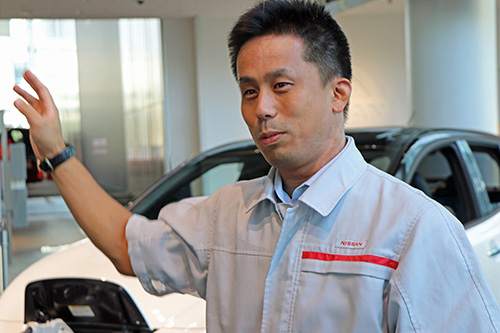
Ryusuke Hayashi, senior manager of EV operations at Nissan
"Medical professionals at an evacuation center were the first ones who approached us about possibly using them as back-up batteries for heating and other purposes – it was still cold up there in March. That experience triggered Nissan to accelerate development of technology that enables EVs to share the energy stored in their batteries with homes, buildings and communities."
With a portable power station , the latest generation Nissan LEAF e+ with a fully charged 62-kilowatt hour battery can provide enough electricity to power an average Japanese home for four days. Or, it could charge 6,200 smartphones, or even power more than 100 elevator round trips in a 43-story apartment building.
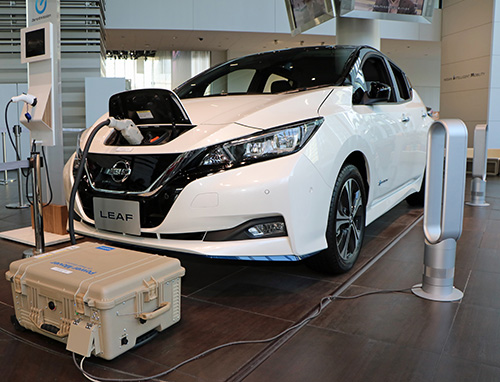
Nissan LEAF powering an electric fan
Another advantage of EVs in the wake of a natural disaster is that electricity is typically restored before gasoline supplies return to normal. According to Japan's Agency for Natural Resources and Energy, 90% of Japan's power grid was restored within a week of the March 2011 disaster, while only 50% of gas stations were reopened.
With that in mind, Nissan has established partnerships with a growing number of municipalities in Japan over recent years, making Nissan EVs their official vehicles. In addition to offering support during emergencies, the vehicles can also provide day-to-day emission-free transportation. Through these same partnerships, local Nissan dealers also supply their test-drive EVs for free during power outages.
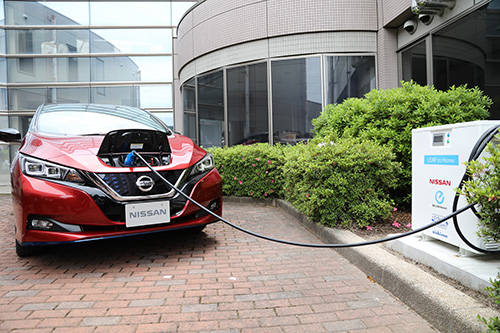
Nissan LEAF powering a building through a vehicle-to-building device
Under another partnership that Nissan struck in Japan, a chain of convenience stores are using LEAFs to restore power during emergencies. This allows residents to buy essential goods, from food and drinks to diapers and toiletries, when most other businesses are still shut down.

EVs again demonstrated their potential in the wake of the recent September 2019 Typhoon Faxai which caused massive blackouts in Chiba, Japan and surrounding regions. Over 340,000 households in Chiba were left without power for more than three days in humid weather. Nissan sent LEAFs to local community centers where residents were able to use the EV batteries for fans, refrigerators, freezers, lighting and smartphones.
Our Japan team sent Nissan #LEAF electric cars to public shelters in Chiba, Japan, to help residents affected by power outages in the wake of Typhoon #Faxai. Those in the area can charge electronic devices at community halls in the cities of Kisarazu & Kimitsu #ChargingStations https://t.co/US2WTYFFMR
— Nissan Motor (@NissanMotor) September 12, 2019
Japan isn't the only area that experiences recurring natural disasters. Southeast Asia has an intense monsoon season, while the Caribbean and the U.S. have a hurricane season that averages one to two hurricane landfalls a year in the state of Florida alone. A 2016 U.S. report from the nonprofit National Association of State Energy Officials emphasized the potential of electric vehicles during these dangerous seasons, saying, "The ability to bring power where it is needed, even on a local scale, can be an invaluable resource during emergencies."
"When people get an EV, they start to see the world differently," says Hayashi. "I know someone who became more environmentally conscious and even started growing their own food. That makes the idea of using their EV to power the home a natural next step. Mobility impacts the way you live."


